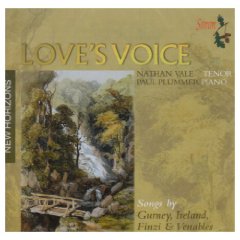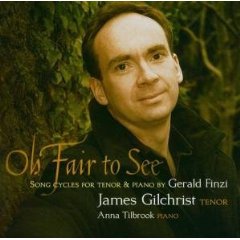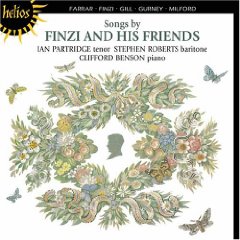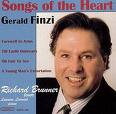To Joy
Poet: Edmund Blunden
Date of poem: (undated)
Publication date: First published in: To Nature, June, 1923 (Kirkpatrick, 16)
Publisher: Beaumont Press (Kirkpatrick, 16), Cobden-Sanderson (Kirkpatrick, 21, 43), and Collins Clear-Type Press (Kirkpatrick, 111)
Collection: First published: To Nature (1923), English Poems (1926), reprinted: The Poems (1930), The Face of England (1938), Edmund Blunden: A Selection of His Poetry and Prose (1950), and Poems of Many Years (1957). (Kirkpatrick, 343)
History of Poem: The poem is written in response to the death of Blunden's first child, Joy. She died in the Summer of 1919 after living only forty days. It is suspected that she died due to drinking tainted milk. Blunden attempted to save her by giving blood at the hospital in hopes that a transfusion might revive her but it had no effect and she died. (Webb, 108) "She is buried in the churchyard at Kirtling, near Newmarket." (Thorpe, 39) Blunden wrote several poems about "Joy." The first one is entitled "The Child's Grave" it was published in 1922 in a collection entitled The Shepherd and Other Poems of Peace and War by Knopf of New York. The other poems are: "Achronos" (English Poems, 1925), "A 'First Impression' "( English Poems, 1925), "In a Country Churchyard" (English Poems, 1925), " 'For there is no Help in Them' " (Retreat, 1928), "Joy and Margaret" (After the Bombing, 1949), "But At Last" (A Hong Kong House, 1962). (Thorpe, 31-8)
Poem: The poem is protected by copyright and therefore cannot be displayed.
Content/Meaning of the Poem:
1st line - Is this not so bad that it makes you moan in grief
2nd line - To see this child gone
3rd line - A child loved - departed from this world
4th line - Into the world of death
5th line - Our tears come without stopping - I would pour out
6th line - My own blood to restore her to the living,
7th line - She never had the opportunity to take one step in this world,
8th line - Or to hear the winds of a storm,
9th line - How can you leave, my little child,
10th line - Alone?
Speaker: Edmund Blunden
Setting: In the mind of the poet.
Purpose: To work through the pain of losing a child.
Idea or theme: Grief
Form: The rhyme scheme for the ten line poem is ababcdcdee. The first line is in Trochaic tetrameter. The second is in Iambic trimeter. The third line is mixed beginning with Iambic dimeter and after the hyphen Dactylic dimeter. The forth line is Anapaestic trimeter. The fifth line is mixed beginning with Anapaestic tetrameter and then after the hyphen the line has the feeling of Trochaic dimeter. The sixth line is Iambic tetrameter. The seventh line is begins with a Dactylic rhythm but ends Anapaestic. The eighth line begins with Iambic and ends Dactylic. The ninth line begins Dactylic and ends Anapaestic. The last line of the poem ends as the poem began in Trochaic tetrameter.
Synthesis: It is not difficult to hear the pain and suffering in Blunden's voice when one reads this poem. Several of the lines are quite interesting. For example lines two through four "To see this babe all motherless - A babe beloved - thrust out alone Upon death's wilderness?" The use of "motherless" is quite intriguing. A question arises as to why Blunden would reverse the logical order in order to say the child is dead. It has the effect of making one think of an orphan child in the land of the dead which we may surmise as Blunden's intention. The sixth line is tinged with irony in that Blunden reportedly gave blood in a last ditched effort to save the child. The last line uses a familiar metaphor of winter for death.
Published comments about the poem: [To Joy] it lacks all suggestion of contrivance; it is emotional but not strained, bare yet imaginative, as moving as any brief elegy in English. The wilderness, the storm, the solitude of the unprotected child: readers may recall 'Alice Fell' and 'Lucy Gray', where the ballad-like rhythms and the bare, essential imagery also seize upon our feelings as soon as uttered. (Thorpe, 42-3)
✦✼✦✼✦✼✦✼✦✼✦✼✦✼✦✼✦✼✦✼✦✼✦✼✦✼✦✼✦✼✦✼✦✼✦
Musical Analysis
Composition date: 1931 (McVeagh, 81)
Publication date: First published 1965 - © Copyright 1966 by Boosey and Co. Ltd.
Publisher: Boosey & Hawkes - distributed by Hal Leonard Corporation
Tonality: The song begins and ends in F minor but the middle B section is in B-flat minor.
Transposition: The song is available a minor third lower than the original key. The transposed version may be found in the Medium/Low Voice edition by Boosey & Hawkes entitled: Gerald Finzi Collected Songs 54 Songs Including 8 Cycles or Sets.
Duration: Approximately three minutes and twenty-seven seconds.
Meter: Finzi utilizes two meters in the song, 6/4 and 4/2. He begins the song in 6/4 for the first sixteen measures before changing to 4/2. The 4/2 meter continues for eleven measures before returning to the opening 6/4 in measure twenty-eight and then continuing in 6/4 for the remainder of the song.
Tempo: The tempo indicated is Grave with the quarter note equalling 100. There is a single indication of tenuto over the text in measures twenty-six and twenty-seven, after which the indication is Tempo I for the remainder of the song.
Form: The form of the song is A - B - A¹ - A² with an identical prelude and postlude (see comparison below of A, A¹, and A²)
A section measures 3-6 and 9-11. (Finzi, 76)
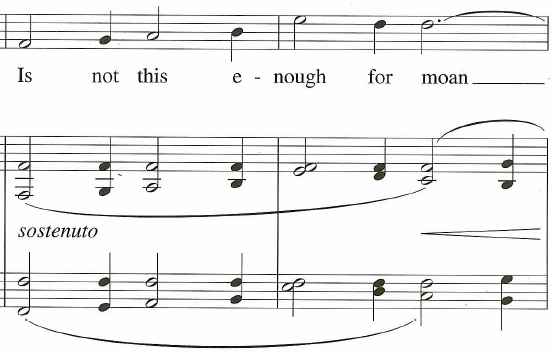
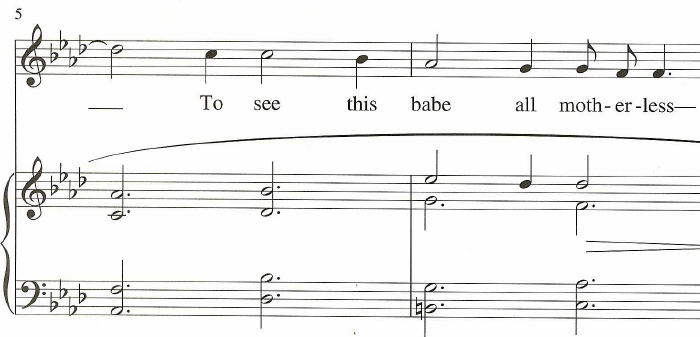

A¹ section measures 28-31. (Finzi, 78)
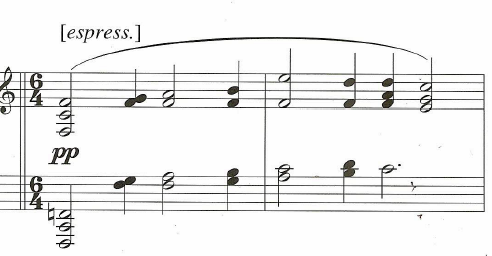
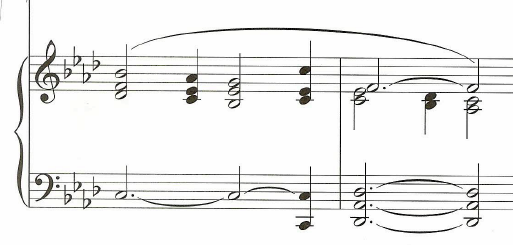
A² section measures 32-5. (Finzi, 78)
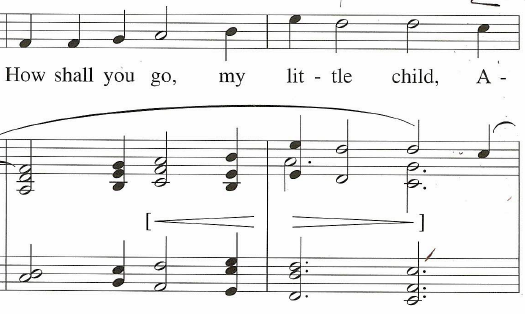
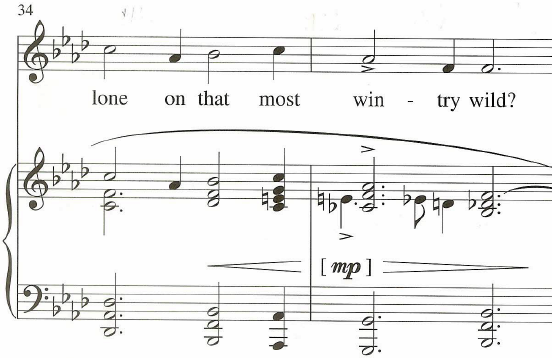
There is also a five measure interlude that precedes the B section and in this interlude a fragment of the opening is found in measure thirteen but it is surrounded by chords that make one ponder the loss of a child as Finzi creates some ominous atmosphere (see interlude below).
Interlude in measures 12-6. (Finzi, 77)

The B section utilizes a rhythmic motif that is repeated six times in the piano accompaniment within the first six measures (see example below). The rhythmic motif when coupled with the melody seems to symbolize the falling tears expressed in the text over the loss of the child "Joy."
Rhythmic motif found in the right hand of the piano accompaniment within measures 17-22. (Finzi, 77)
(measures 17-8)
(measures 19-20)
(measures 21-2)
Also note how the melody in measures seventeen, eighteen, and twenty-one is only slightly modified in measure twenty-one.
The song is framed with an identical prelude and postlude consisting of the pitch [F] placed in three octaves terminating in the [F] above middle [C] (see examples below).
Prelude, measure 1 and 2. (Finzi, 76)
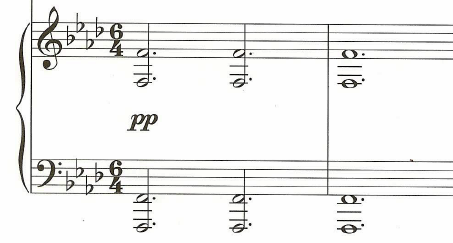
Postlude, measure 37-8. (Finzi, 78)
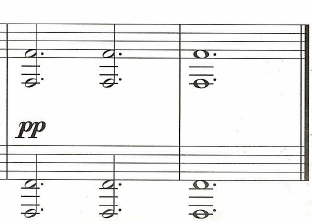
Rhythm: The song for the most part moves at a very slow gait as Finzi develops the morbid atmosphere of the song and because of this the rhythmic durations are quite long in the piano accompaniment and even the vocal line is very sedated. The most prominent rhythmic figure occurs in the B section of the piano accompaniment where Finzi repeats the same figure for six measures. The rhythmic figure has what could be construed as a "sob" as a pick-up to the third beat (see example below) especially when coupled with a falling melodic figure.
Rhythmic figure in measure 17. (Finzi, 77)

A rhythmic duration analysis was performed and for the results please refer to: Rhythm Analysis. Information contained within the analysis includes: the number of occurrences a specific rhythmic duration was used; the phrase in which it occurred; the total number of occurrences in the entire song.
Melody: The melody is made up of step-wise motion with small leaps. The most prominent melodic figure consists of a three note theme which is first heard in measure three and then repeated in measures eleven, thirteen, twenty-eight, and thirty-two (see examples below).
Melodic theme in measure 3. (Finzi, 76)
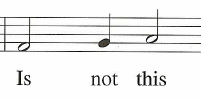
Melodic theme in measure 11. (Finzi, 76)

Melodic theme in measure 13. (Finzi, 77)
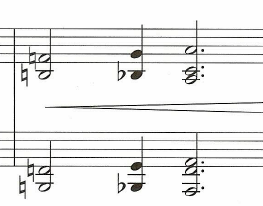
Melodic theme in measure 28. (Finzi, 78)
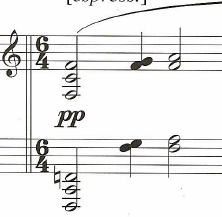
Melodic theme in measure 32. (Finzi, 78)
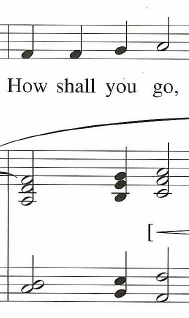
An interval analysis was performed for the purpose of discovering the number of occurrences specific intervals were used and also to see the similarities if there were any between stanzas. Only intervals larger than a major second were accounted for in the interval analysis. For a complete description of the results of the interval analysis please see the table at the bottom of the page or click on the link: Interval Analysis.
Texture: The song utilizes both homophonic texture and contrapuntal writing. The contrapuntal writing predominates the B section of the song.
Vocal Range: The vocal range spans the interval of a major tenth. The lowest pitch is the F flat below middle C and the highest pitch is the A flat above middle C.
Tessitura: The tessitura of the song lies between the F flat below middle C and the F above middle C. For a complete pitch count for each stanza please refer to: Pitch Analysis.
Dynamic Range: The song begins pianissimo and ends the same but between there are numerous indications of dynamics. The loudest indication, mezzo forte, is found in measure twenty-three in the piano accompaniment. The loudest point in the vocal line occurs in measure twenty-two but there are no dynamic indications to tell us how loud it should be. The only indications in the vocal line occur in measures twenty-six and twenty-seven where we find a crescendo and decrescendo.
Accompaniment: Primarily chordal throughout except measures seventeen through twenty-one where the right hand becomes more active. Some of the chords in measures twelve through fifteen and twenty-six through twenty-seven are not what one expects from Finzi but none of them are terribly difficult (see example below).
Chords found in measures 12-6 and 26-7. (Finzi, 77-8)


Published comments about the music: Diana McVeagh a noted authority on Gerald Finzi makes the following comments in her Finzi biography: "During 1931 Finzi set 'To Joy' by Edmund Blunden. This Joy was Blunden's baby - 'thrust out alone Upon death's wilderness'. At the time Blunden was living in East Anglia, and some see in the arch of this song, and in the sullen heavy chords between the verses, the wide landscape and brooding clouds of a Suffolk storm."
(McVeagh, 81)
Stephen Banfield makes the following comments in his Finzi biography: ". . . may have already been under way in the latter part of 1931, around the same time as 'To Joy', which shares 'Intrada's' 6/8 metric blueprint (and its melodic beginning, complete with imitation). Their strongest common origin is in the second of Vaughan William's Four Hymns, more or less the first of his newly published works of which Finzi would have been aware as a young man; even the key (F minor) is the same as that of 'To Joy', and Blunden's opening lines ('Is not this enough for moan / To see this babe all motherless . . . thrust out alone / Upon death's wilderness?') seem to invite an echo of Isaac Watts's ('Who is this fair one in distress, / That travels from the wilderness'). 'To Joy' continues the parallel with 'Intrada' when it goes into a 'strummed' duple/quadruple-time middle section. This now proposes less of a march-like consequent than is the norm in A Young Man's Exhortation, more a dainty, slightly archaic and ghostly dance (see the motivic imitation at 'I would weep / My blood away'), though within a rounded tonal form: the transition back to the compound-time opening, with its F [flat] / E [natural] pivot at the word 'storm', sounds forced and hollow. Elsewhere in this song one senses that, now that he has found a harmonic framework for them, his style is rapidly settling into that armoury of idiomatic 'topics' - melodic phrases, rhythms, accompaniment patterns, harmonic and textural gestures - that makes it so distinctive. Compare, for instance, the setting of 'Upon death's wilderness?' with that of 'A ghost-girl-rider' in 'The phantom', or 'A babe beloved - thrust out alone' with '. . . so many of worth, / Still in the flesh' from 'In a churchyard'."
(Banfield, 188-9)
Criticism: The song set Oh Fair to See was first published in 1965. In the next year a review appeared in the October 1966 issue of Music & Letters that singled out To Joy and said it was "superb." The review went on to say the entire collection was "rich in imaginative ideas, and have a particularly concentrated harmonic intensity. Nowhere, not even in the dullest setting, does Finzi deserve the reputation for maudlin nostalgia with which he is so carelessly dismissed today." (I.D.B., 381)
Pedagogical Considerations for Voice Students and Instructors: This is one of the more dramatic songs in this set but the range is not terribly high and the tessitura should be comfortable for all tenors. What seems more challenging about this song is the breath management especially if one takes the song at a slow stately tempo. The tempo indicated is good and if one observes this tempo they should not struggle with the breath. One caveat to the previous statement: the phrase that begins with a pick-up half-note at the end of measure twenty-five and goes through measure twenty-seven will need possibly extra work in order to feel comfortable. One will need to keep the tempo moving through the phrase otherwise the text and dynamics at the end of the phrase may suffer as one begins to run out of breath. Measures twenty-one and twenty-two also feature one of more difficult sections of the song as the vocal line moves stepwise in an ascending manner through the passaggio before leaping to an [A-flat] above middle [C]. If the [A-flat] is difficult one might first observe the vowel placement and if one is singing a diphthong try modifying to an open [E].
✦✼✦✼✦✼✦✼✦✼✦✼✦✼✦✼✦✼✦✼✦✼✦✼✦✼✦✼✦✼✦✼✦✼✦
| Pitch Analysis | ||
|---|---|---|
| pitch | total | |
highest |
A |
1 |
G |
1 |
|
F |
4 |
|
E |
9 |
|
D |
9 |
|
middle C |
13 |
|
B |
10 |
|
A |
8 |
|
G |
5 |
|
lowest |
F |
16 |
✦✼✦✼✦✼✦✼✦✼✦✼✦✼✦✼✦✼✦✼✦✼✦✼✦✼✦✼✦✼✦✼✦✼✦
Audio Recordings
The English Song Series - 16 |
|
|
|
Love's Voice |
|
|
|
Song Cycles for Tenor & Piano by Gerald Finzi |
|
|
|
Song by Finzi and His Friends |
|
|
|
Oh Fair to See: Songs by English composers |
|
|
|
Songs of the Heart: Song Cycles of Gerald Finzi |
|
|
|


